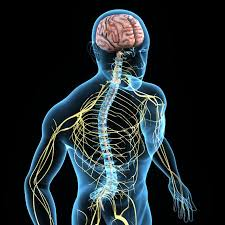Neurological System and Drug Misuse According to an article published in the Los Angeles Times, drug misuse is the leading cause of accidental death in the United States. Some of the most common drugs found in association with drug-related deaths are drugs prescribed to treat neurological disorders.

These prescription drug-related deaths are often attributed to painkillers such as OxyContin and Vicodin, as well anti-anxiety drugs such as Valium and Xanax (Girion, Glover, & Smith, 2011).
Neurological System and Drug Misuse and Prescription
This issue emphasizes the importance of the regulation and management of prescription drugs. You must be aware of this when prescribing controlled drugs commonly used to treat neurological disorders such as headaches, sleep disorders, anxiety, and depression. As an advanced practice nurse, you have the responsibility to carefully diagnose and prescribe treatment, as well as to closely monitor the effects of drug therapies on the physical and mental health of your patients.
In the previous weeks of this course, you began to explore disorders and treatments as they relate to specific body systems. This week, you continue this exploration with the nervous system, but with special considerations in mind. Treatments for nervous system disorders present unique issues not just because of the scope and breadth of the disorders, but also because the types of drugs that are often used for treatment. You examine types of drugs prescribed to treat neurological disorders, as well as the impact of patient factors on the effects of the drugs.
Neurological System and Drug Misuse Learning Objectives
By the end of this week, students will:
Analyze types of drugs prescribed to treat neurological disorders
Evaluate the impact of patient factors on the effects of prescribed drugs for neurological disorders
Evaluate drug therapy plans for neurological disorders
Analyze patient education strategies for treatment and management of neurological disorders
Understand and apply key terms, concepts, and principles related to prescribing drugs to treat neurological disorders
Photo Credit: akindo/DigitalVision Vectors/Getty Images
Learning Resources
This page contains the Learning Resources for this week. Be sure to scroll down the page to see all of this week’s assigned Learning Resources. To access select media resources, please use the media player below.
Neurological System and Drug Misuse Required Readings
Arcangelo, V. P., Peterson, A. M., Wilbur, V., & Reinhold, J. A. (Eds.). (2017). Pharmacotherapeutics for advanced practice: A practical approach (4th ed.). Ambler, PA: Lippincott Williams & Wilkins.
Chapter 7, “Principles of Pharmacology in Pain Management” (pp. 93-109)
This chapter begins by examining acute and chronic pain. It also explores the pathophysiology of pain, general principles for managing pain, and drugs used in pain management.
Chapter 38, “Headaches” (pp. 629-654)
This chapter covers the causes, pathophysiology, and diagnostic criteria for tension and migraine headaches. It then outlines the process of selecting, administering, and managing drug therapy for headaches, including migraines and cluster headaches.
Chapter 39, “Seizure Disorders” (pp. 655-680)
This chapter explores the causes, pathophysiology, and diagnostic criteria of seizures. It also describes the process of selecting, administering, and managing drug therapy for patients with seizures.
Chapter 40, “Major Depressive Disorder” (pp. 681-699)
This chapter begins by identifying the causes, pathophysiology, and diagnostic criteria of major depressive disorder (MDD). It then examines types of depressions and drugs prescribed to treat patients suffering from MDD.
Chapter 41, “Anxiety” (pp. 701-718)
This chapter examines the causes, pathophysiology, and diagnostic criteria for anxiety. It also outlines the process of selecting, administering, and managing drug therapy for patients with anxiety.
Chapter 42, “Insomnia and Sleep Disorders” (pp. 721-755)
This chapter covers the causes, pathophysiology, and diagnostic criteria of three sleep disorders: insomnia, restless leg syndrome and periodic limb movement disorder, and narcolepsy. It also examines the process of selecting, administering, and managing drug therapy for patients with these sleep disorders.
Chapter 44, “Alzheimer’s Disease” (pp. 757-780)
This chapter examines the causes and pathophysiology of Alzheimer’s disease (AD). It also describes various drugs used to treat symptoms of AD, including proper dosages and possible adverse reactions.
American Academy of Family Physicians. (2012). Dementia. Retrieved from http://www.aafp.org/afp/topicModules/viewTopicModule.htm?topicModuleId=5
This website provides information relating to diagnosis, treatment, and patient education of dementia. It also presents information on complications and special cases of dementia.
Drugs.com. (2012). Retrieved from http://www.drugs.com/
This website presents a comprehensive review of prescription and over-the-counter drugs including information on common uses and potential side effects. It also provides updates relating to new drugs on the market, support from health professionals, and a drug-drug interactions checker.
Required Media
Laureate Education, Inc. (Executive Producer). (2012). Pharmacology for the nervous system. Baltimore, MD: Author.
This media presentation outlines drug treatment options for disorders of the nervous system.
Note: The approximate length of this media piece is 7 minutes.
Optional Resources
Refer to the Optional Resources listed in Week 1.




